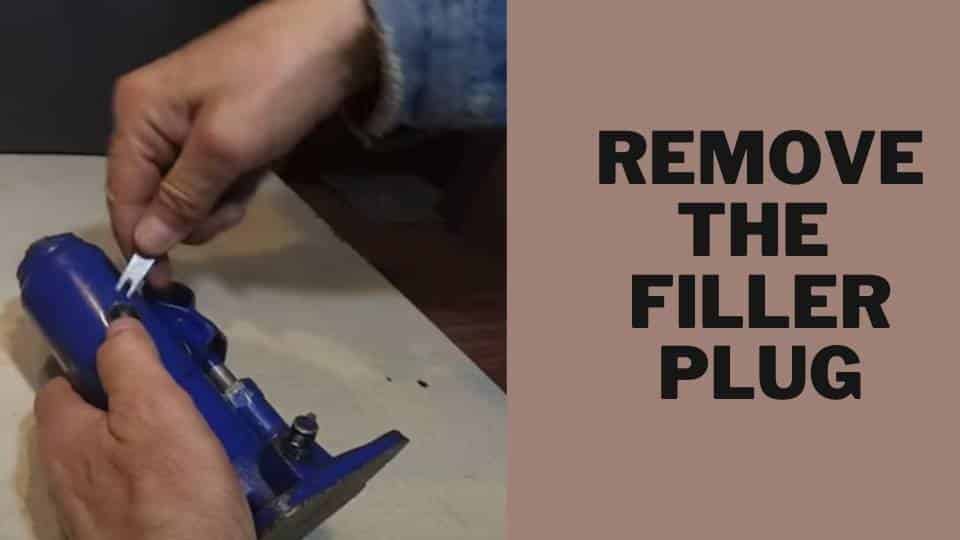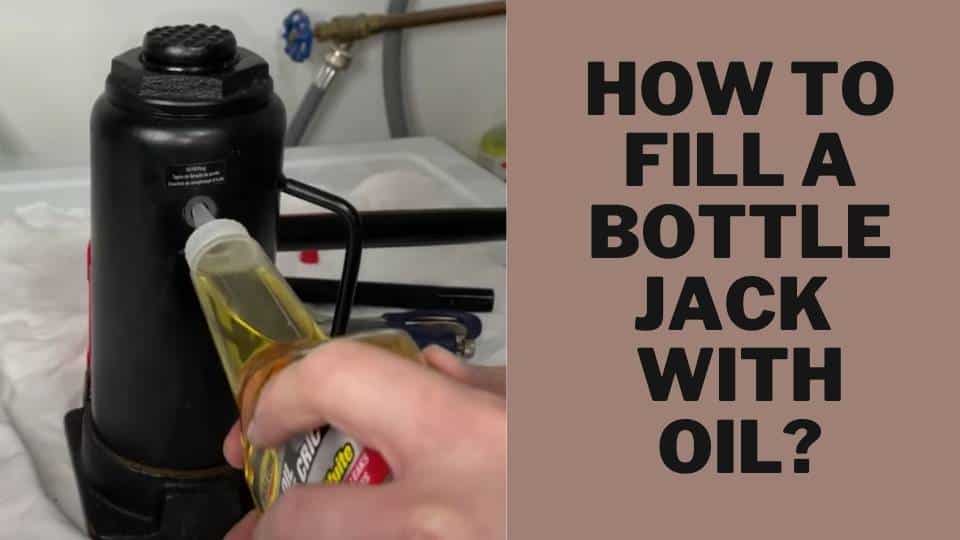Are you eager to refill your bottle jack with oil but unsure about the process? Fear not, as this article will guide you through each step to successfully fill your bottle jack.
Just as you regularly change your car engine oil to ensure optimal performance, maintaining proper lubrication is essential for your bottle jack’s functionality. Over time, old oil can hinder its lifting capabilities, necessitating a replacement for improved performance.
If it’s been years since you last changed the oil in your bottle jack and you’re ready to refill it, then this article is tailor-made for you.
Without further ado, let’s get started on filling your bottle jack.
What Do You Need for the Filling?
Before diving into the task, it’s crucial to gather all the necessary tools and materials for filling your bottle jack. This ensures a smooth workflow without the need to hunt for tools midway through the job. Here’s a list of essential items you’ll need:
- Hydraulic oil
- Bottle jack
- Screwdriver (the type depends on your jack model and the specific screws involved)
- Funnel or a plastic squeeze bottle (for precise pouring)
- Rag or cloth for cleaning purposes
With these items at hand, you’ll be well-equipped to proceed with filling your bottle jack.
How to Fill a Hydraulic Bottle Jack?
Place Your Jack on a Flat Ground:
Positioning your jack on level ground serves multiple purposes: it prevents the jack from tipping over during operation and helps maintain an even distribution of oil within the chamber, minimizing spillage.
To maintain cleanliness throughout the process, it’s advisable to place a rag or cloth beneath the jack. This precautionary measure safeguards the work area from any potential oil spills, ensuring a tidy workspace even in the event of accidental leakage.
Rotate the Release Valve of Your Jack:
To gain access to the filler hole, start by opening the release valve of your jack. The type of valve mechanism can vary depending on your jack’s model. It may be a press-release valve or one that requires rotation to open.
If your jack features a rotational valve, use the jack’s handle to turn it counterclockwise. Once opened, ensure to keep the valve in this position throughout the filling process. This step is crucial for allowing smooth oil flow into the jack’s chamber.
Remove the Filler Plug:

Next, locate the filler plug on your bottle jack, typically situated on the top side of the cylinder. Some bottle jacks may have a rubber cover over the filler plug. If your jack has this cover, remove it to reveal a screw underneath. Proceed to remove this screw as well.
Depending on the jack model, the filler hole may feature a screw without a rubber cover, or it may have a cap on the screw. Regardless of the design, remove any covering to access the filler hole.
Before removing the screw, ensure to clean the surrounding area thoroughly. Since the bottle jack may not have been filled for months or even years, dirt and debris may have accumulated around the hole. Wipe the area with a cloth or wash it to prevent any contaminants from entering the oil reservoir. As you begin to loosen the screw, do so slowly to prevent excess oil from spilling out of the hole.
If you’re having trouble locating the filler plug, consult the owner’s manual for your bottle jack to identify its precise location.
Squeeze in the Oil with the Funnel or Plastic Squeeze Bottle:

If you have sufficient oil to refill the reservoir, begin by removing all the old oil from the jack. To do this, hold the jack horizontally with the filler hole facing downwards, allowing the old oil to drain out into a container or suitable receptacle.
Once you’ve emptied the bottle jack of old oil, return it to a vertical position on the ground. Prepare your plastic squeeze bottle filled with the new oil. Ensure that the squeeze bottle has a long tip opening, facilitating easy insertion into the filler hole.
Replace the Filler Plug:
Now that you’ve refilled the bottle with new oil, take a moment to clean the area around the filler hole. This helps ensure a tight seal and prevents any potential leaks. Once the area is clean, reinsert the screw into its position and tighten it by turning it clockwise. If there was a cover over the screw, be sure to replace it as well, securing it firmly in place. This step completes the filling process and prepares your bottle jack for use.
Try the Jack
After filling the jack, perform a few strokes to test its operation. If the filling process was successful, you should notice smoother lifting compared to before. Since you’re not lifting any load during this test, you may need to press down on the head of the jack after releasing it, as there won’t be any pressure on it. Don’t worry if it doesn’t settle immediately during this test phase.
Additionally, pumping the jack will help release any air that may have been trapped inside during operation, ensuring optimal functionality.
Video Tutorial
What Kind of Oil Do You Put in a Bottle Jack?
When filling your bottle jack, ensure you use anti-foaming jack oil, preferably a high-quality graded hydraulic oil. This type of oil provides adequate lubrication and helps prevent corrosion, ensuring the longevity of your jack.
Avoid using brake fluid, motor oil, transmission oil, or any alcohol-based oil to fill your bottle jack. These substances are not suitable for hydraulic systems and can cause damage. Stick to hydraulic oil recommended for your jack, and never mix different types of oils.
Following this rule and consulting your owner’s manual will help maintain the integrity of your jack’s hydraulic system and ensure optimal performance.
How Much Oil Do You Put in a Bottle Jack?
The amount of oil you should fill your bottle jack with depends on its size and load capacity. A general guideline is to fill the jack with oil until it reaches just ⅛ inch (0.3 cm) below the filler hole. To determine this level, continue filling the jack until the oil reaches the opening of the hole, then cease filling.
Overfilling the jack with oil can lead to issues such as the jack not lowering to its original height. Therefore, it’s essential to avoid adding excessive oil to the reservoir and adhere to the recommended fill level to ensure proper functionality.
Does a Bottle Jack Work without Oil?
Nope. A hydraulic system doesn’t function without hydraulic oil. A bottle jack operates on the principles of hydraulics. Jack oil facilitates the transfer of mechanical energy from the jack pump to lifting power. The lifting capability of a hydraulic jack relies on the presence of oil.
Why Won't Bottle Jack lift?
Your bottle jack may fail to lift any weight or support a load if the oil level is too low. It’s crucial to fill the oil reservoir of your bottle jack to ensure it can effectively raise the load. Insufficient oil may prevent the bottle jack from extending to its full height, compromising its lifting capacity.
Conclusion
You’ve learned how to fill a bottle jack in this article. Remember to use high-quality hydraulic jack oil for better performance. Maintain a proper schedule for filling your best bottle jack for trucks or other vehicles. A good rule of thumb is to refill your bottle jack once every three months.
